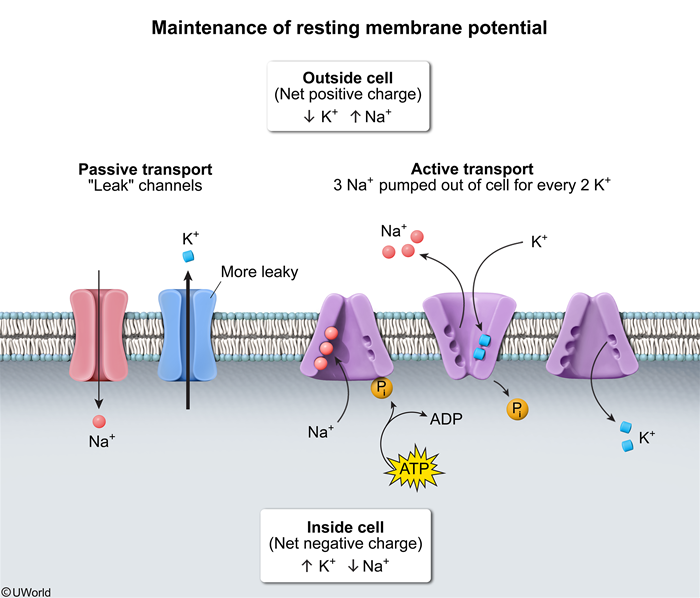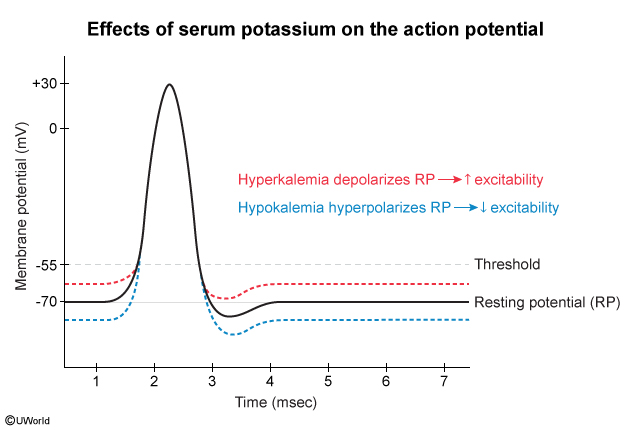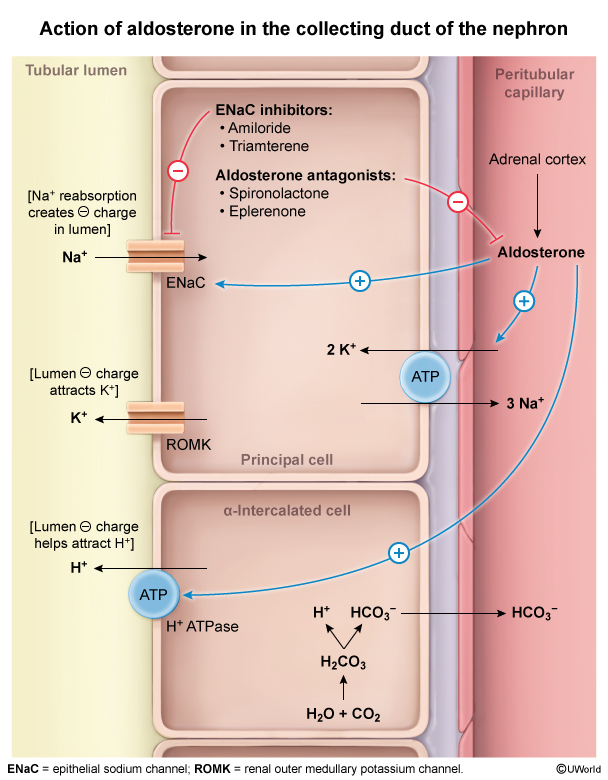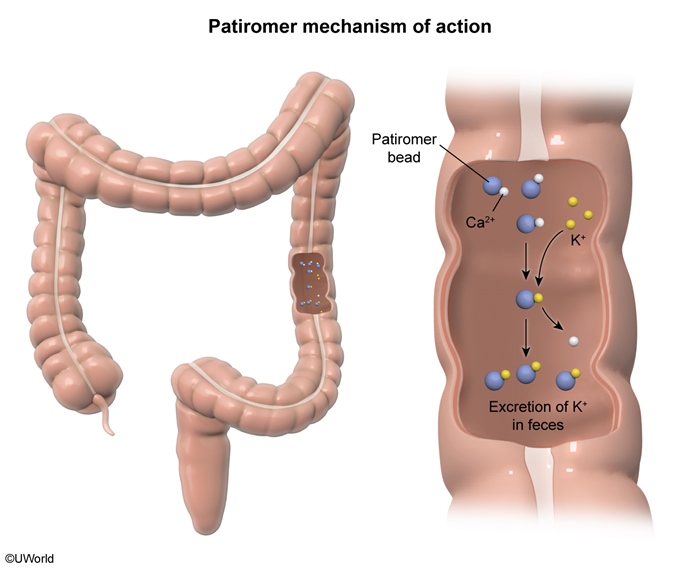Potassium Disorders: Hyperkalemia And Hypokalemia
Article Sections
Introduction
Potassium (K+) plays a critical role in maintaining cellular function, nerve transmission, and muscle contraction. After oral ingestion or intravenous (IV) administration, potassium is largely stored intracellularly and then steadily excreted in the urine. Hyperkalemia (serum potassium >5.0 mEq/L) and hypokalemia (serum potassium <3.5 mEq/L) require prompt recognition and management to prevent complications that may be potentially life-threatening.
Pathophysiology
The body maintains a total potassium reservoir of approximately 3,000-4,000 mEq depending on body weight. Approximately 98% of the body's potassium resides within cells with a concentration of approximately 140 mEq/L, whereas extracellular concentrations are normally only 3.5-5 mEq/L. The marked disparity in potassium distribution across cellular membranes is the major determinant of the resting membrane potential (RMP). The RMP is integral for action potentials (eg, nerve transmission, muscle contraction) and is actively maintained by the Na
Continue Learning with UWorld
Get the full Potassium Disorders: Hyperkalemia And Hypokalemia article plus rich visuals, real-world cases, and in-depth insights from medical experts, all available through the UWorld Medical Library.
Figures




